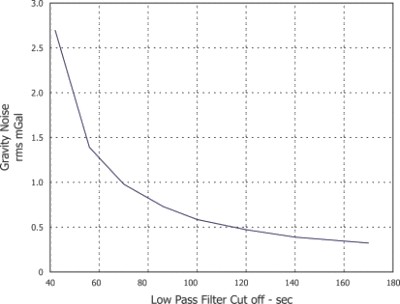
Airborne Gravity with AIRGrav
Sander Geophysics Limited (SGL) offers airborne gravity
surveys using our Airborne Inertially Referenced
Gravimeter - AIRGrav. SGL´s AIRGrav is
the only purpose-built airborne gravimeter, and was
designed specifically for the unique characteristics of
the airborne environment. This design approach has
resulted in a superior gravity instrument which can be
flown in an efficient survey aircraft during normal
daytime conditions. In addition, AIRGrav can
easily be flown in combination with magnetic and/or
radiometric instruments to increase the survey benefits.
AIRGrav was designed primarily for petroleum
exploration, where it is an economical alternative to
ground and shipborne surveys. AIRGrav also has
exciting application in regional geophysics, mineral
exploration and geodesy.
The AIRGrav system includes an all new gravimeter
on a three-axis inertially stabilized platform, combined
with high resolution Differential GPS (DGPS) to correct
for aircraft movements due to turbulence, aircraft
vibrations and drape flying. The gyro stabilized inertial
platform makes the gravimeter much less affected by
horizontal accelerations than other systems, which use
modified sea gravimeters. This allows AIRGrav to
achieve consistently higher resolution. The AIRGrav
system is currently available to fly fixed-wing or
helicopter surveys.
Terrain corrections are performed using either an
existing digital terrain model or terrain data acquired in
the course of the gravimetric survey. Digital terrain
models can be supplemented with remote sensing data if
required, depending on the nature of the terrain and the
resolution of the survey. Terrain corrections for
airborne gravity surveys are in some ways easier than
ground surveys because airborne gravity does not require
near station corrections, and is not susceptible to errors
due to anomalous densities near a gravity station.
Production surveys have been flown under a variety of
conditions including offshore, at a constant altitude over
rolling terrain, and with a loose drape over high
mountains (>3,000 m). Because the system is relatively
tolerant of turbulence, it works well on drape surveys and
in moderate to severe turbulence.
Sander Geophysics recently completed a combined gravity
and magnetic survey in the Turner Valley area, south of
Calgary, Canada. The map above shows the first vertical
derivative of the terrain corrected Bouguer gravity with
the shadow of the first vertical derivative of the total
magnetic intensity. The data set consists of over 12,000
lkm of data flown on 250 m spaced east-west lines, and
1,000 m north-south lines. The extent of the data set is
60 km from north to south. Noise was calculated to be 0.3
mGal. Gravity anomalies of less than 2 mGal can be seen
clearly on the data set and correlate well with known oil
and gas fields.
Results from numerous AIRGrav surveys have been
rigorously analyzed to determine system performance and
optimum processing parameters. The graph below shows rms
gravity noise plotted against filter length (20 s = 1 km).
The graph shows that the noise level drops off quickly as
the filter length increases, which indicates that noise is
concentrated in the higher frequencies. The graph also
clearly illustrates the relationship between accuracy and
resolution, and how one can be traded off against the
other depending on the client´s objectives.

The following graph demonstrates the effect of averaging
a number of lines (a process which is similar to stacking
seismic data), which can be achieved by flying closely
spaced lines and applying a filter with a wavelength
longer than the line spacing. The graph shows rms gravity
noise plotted against the number of lines averaged, for
various filter lengths. Using this procedure, the final
grid data will have a noise level significantly lower than
the individual profile data.
Shown below are typical AIRGrav survey
parameters. As described above, the accuracy and
resolution of the gravity data depends on the aircraft
speed and the line spacing.
| Accuracy RMS (mGal) |
Resolution ½ sine wave (m) |
Aircraft |
Velocity (kt) |
Line Spacing
(m) |
Production Rate (km2/day) |
| 0.2 |
4,000 |
fixed-wing |
120 |
1000 |
500 |
| 0.2 |
2,200 |
fixed-wing |
95 |
300 |
150 |
| 0.2 |
1,100 |
helicopter |
50 |
200 |
100 |
| 0.2 |
700 |
helicopter |
35 |
50 - 100 |
30 |
AIRGrav services include survey planning, data
acquisition, preliminary processing in the field, final
data processing to terrain corrected Bouguer gravity and a
comprehensive technical report. SGL also offers
integrated interpretation of AIRGrav, aeromagnetic
and other data sets.
|